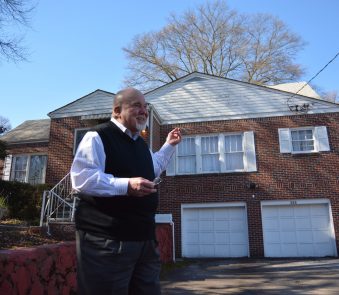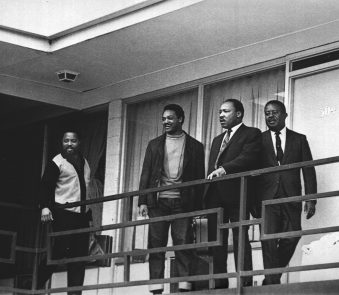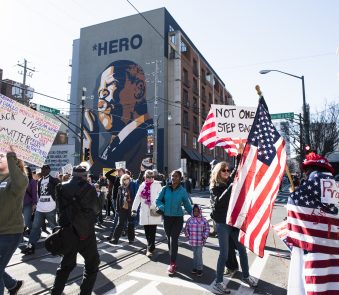PHOTOS: 50 Years After MLK’s Death, A Look At His Life
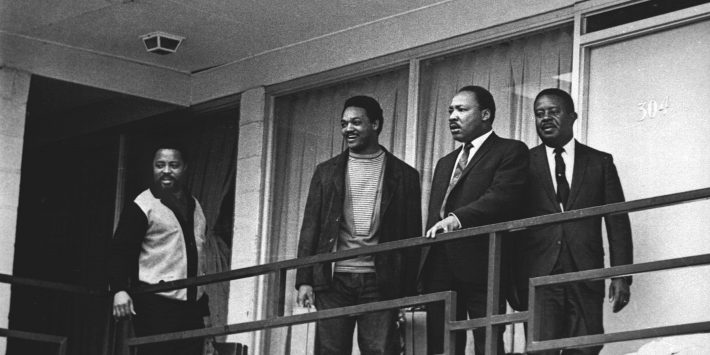
-
1/17

In this April 3, 1968 file photo, the Rev. Martin Luther King Jr. stands with other civil rights leaders on the balcony of the Lorraine Motel in Memphis, Tenn., a day before he was assassinated at approximately the same place. From left are Hosea Williams, Jesse Jackson, King, and Ralph Abernathy.
CHARLES KELLY, FILE / Associated Press -
2/17
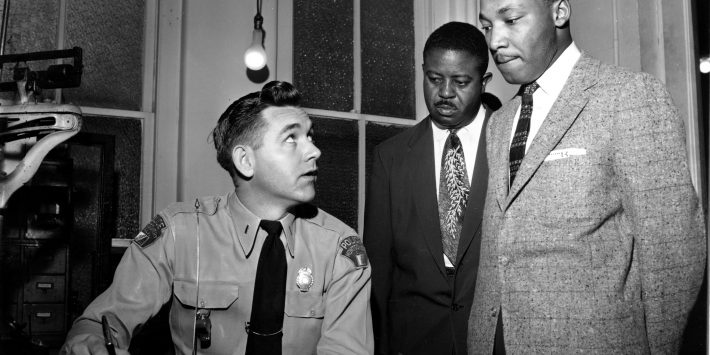
The Rev. Martin Luther King Jr., right, accompanied by Rev. Ralph D. Abernathy, center, is booked by city police Lt. D.H. Lackey in Montgomery, Ala., on Feb. 23, 1956. The civil rights leaders are arrested on indictments turned by the Grand Jury in the bus boycott.
GENE HERRICK / Associated Press -
3/17

The Rev. Martin Luther King Jr. is welcomed with a kiss by his wife Coretta after leaving court in Montgomery, Ala., March 22, 1956.
GENE HERRICK / Associated Press -
4/17
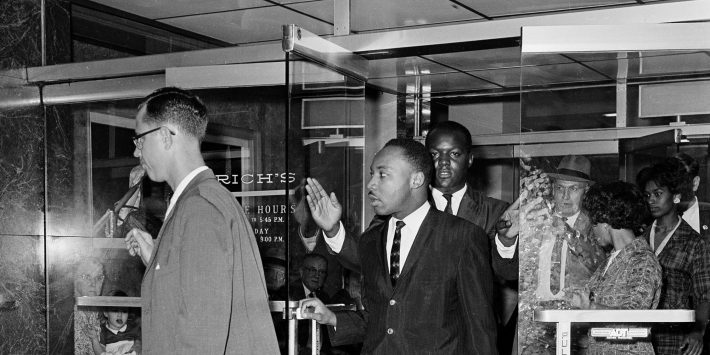
Dr. Martin Luther King Jr. exits Rich’s department store in Atlanta, Ga., Oct. 19, 1960. He was among those arrested following demonstrations at several department and variety stores protesting lunch counter segregation. Others are unidentified.
ASSOCIATED PRESS / Associated Press -
5/17
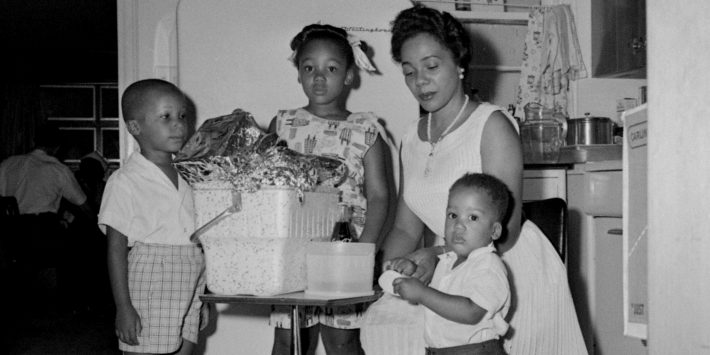
Coretta Scott King and their three children pack a picnic basket with at their Albany, Ga. temporary home, August 5, 1962. From left are: Martin Luther King III, 4; Yolanda Denise King, 6; and Dexter Scott King, 18 months old.
ASSOCIATED PRESS / Associated Press -
6/17
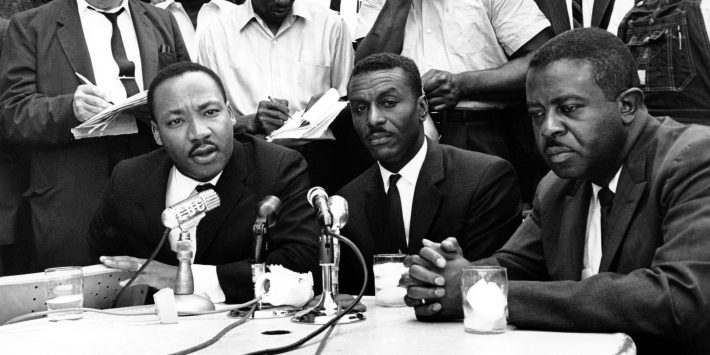
Civil rights leaders, Rev. Dr. Martin Luther King Jr., left, Rev. Fred Shuttlesworth, center, and Rev. Ralph Abernathy hold a news conference in Birmingham, Ala., May 8, 1963.
ASSOCIATED PRESS / Associated Press -
7/17
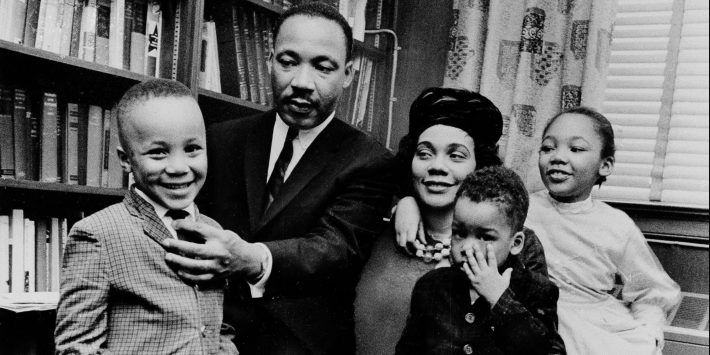
Dr. Martin Luther King Jr. and his wife, Coretta Scott King, sit with three of their four children in their Atlanta, Ga, home, on March 17, 1963. From left are: Martin Luther King III, 5, Dexter Scott, 2, and Yolanda Denise, 7.
ASSOCIATED PRESS / Associated Press -
8/17
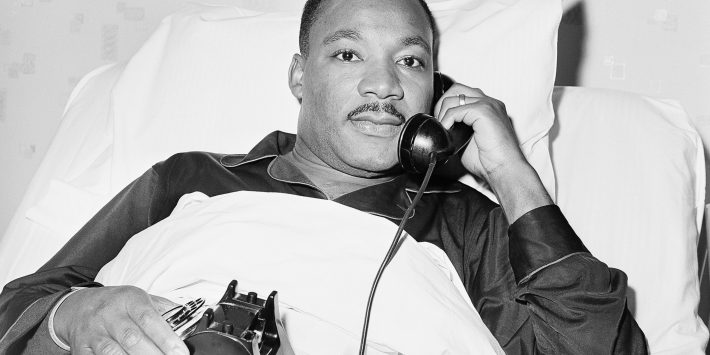
Dr. Martin Luther King Jr. receives word by phone that he has been awarded the Nobel Peace Prize as he lies in hospital bed in Atlanta, Ga., October 14, 1964, where he went for a checkup.
ASSOCIATED PRESS / Associated Press -
9/17
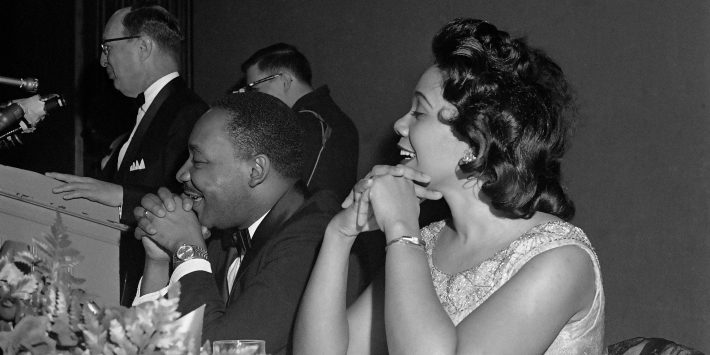
Dr. Martin Luther King Jr., right, winner of the 1964 Nobel Peace Prize in Atlanta on Jan. 27, 1965.
ASSOCIATED PRESS / Associated Press -
10/17
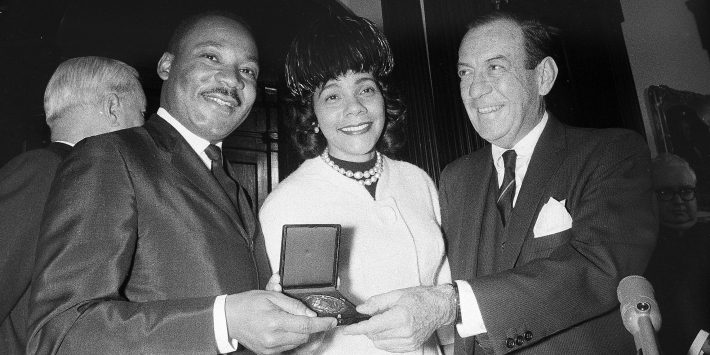
The Rev. Martin Luther King, Jr., left, receives the City of New York’s Medallion of Honor from Mayor Robert Wagner in a City Hall ceremony, Dec. 17, 1964.
TONY CAMERANO / Associated Press -
11/17
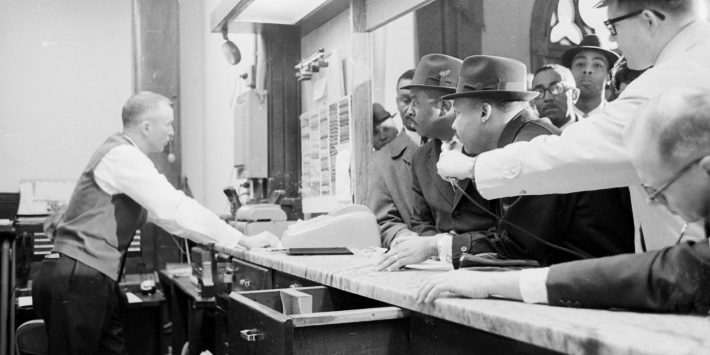
Dr. Martin Luther King Jr., right, wearing hat, and Rev. Ralph Abernathy, also wearing hat, try to check into a room at the Hotel Albert in Selma, Ala., Jan. 18, 1965. A reporter at far right holds a microphone out as the hotel clerk works behind the desk.
HORACE CORT / Associated Press -
12/17
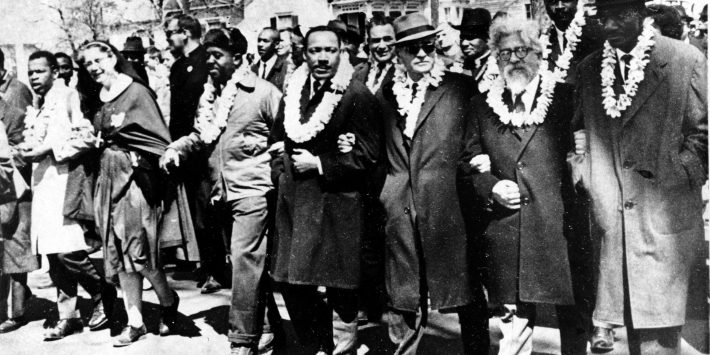
Dr. Martin Luther King Jr. links arms with other civil rights leaders as they begin the march to the state capitol in Montgomery from Selma, Ala. on March 21, 1965.Accompanying Dr. Martin Luther King Jr. (fourth from right), are on his left Ralph Bunche, undersecretary of the United Nations, Rabbi Abraham Joshua Heschel, and Rev. Fred Shuttlesworth. They are wearing leis given by a Hawaiian group.
ASSOCIATED PRESS / Associated Press -
13/17
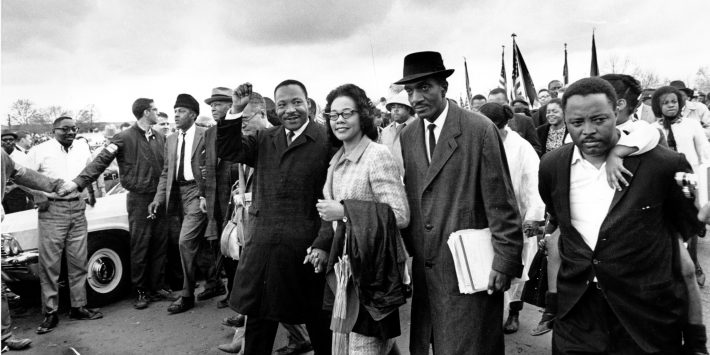
Dr. Martin Luther King Jr., and his wife, Coretta Scott King, lead off the final lap to the state capitol at Montgomery, Ala., on March 25, 1965. Thousands of civil rights marchers joined in the walk, which began in Selma, Ala., on March 21, demanding voter registration rights for blacks. Rev. D.F. Reese, of Selma, is at right.
ASSOCIATED PRESS / PBA -
14/17
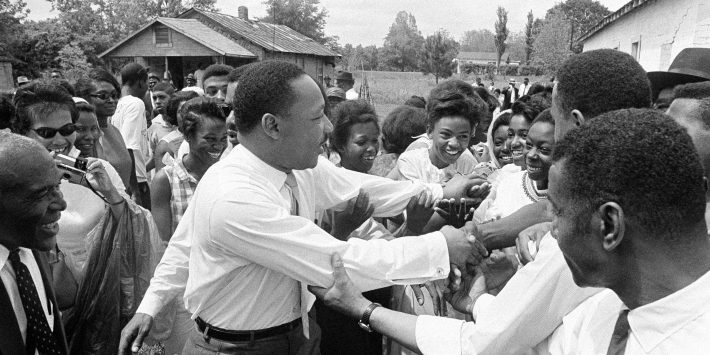
Dr. Martin Luther King Jr. found a lot of enthusiastic takers as he shook hands with a group of girls after addressing a political rally in Lisman, Alabama on April 30, 1966.
JACK THORNELL / Associated Press -
15/17
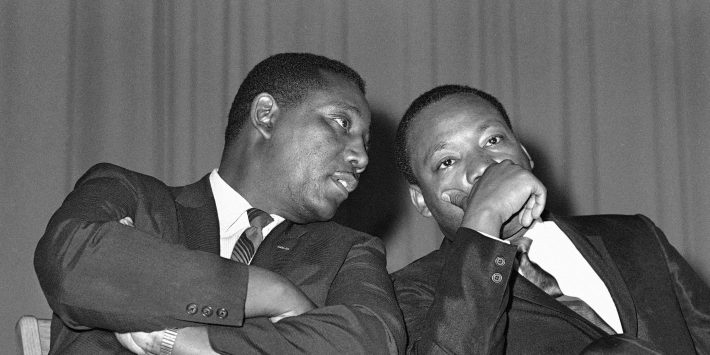
Dr. Martin Luther King and Charles Evers, NAACP field secretary together in Jackson, Miss., March 20, 1968.
JACK THORNELL / Associated Press -
16/17
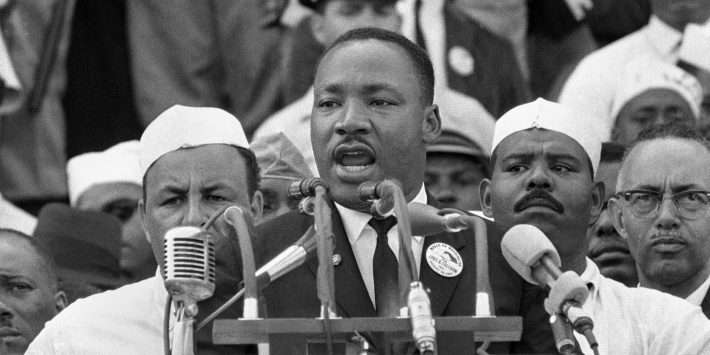
In this Aug. 28, 1963, file photo, Dr. Martin Luther King Jr., addresses marchers during his “I Have a Dream” speech at the Lincoln Memorial in Washington.
AP PHOTO, FILE / PBA -
17/17
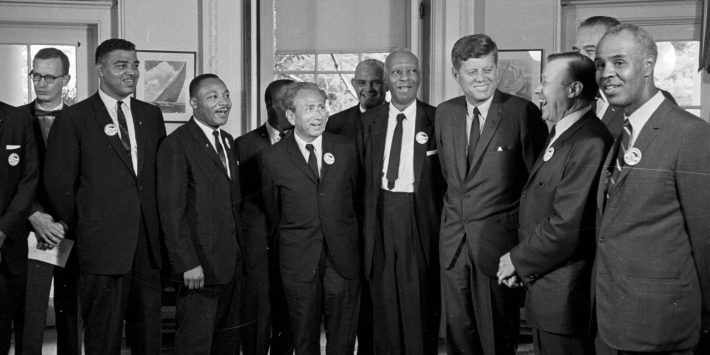
In this Aug. 28, 1963 file photo, President Kennedy stands with a group of leaders of the March on Washington at the White House in Washington. From second left are Whitney Young, Dr. Martin Luther King, John Lewis, Rabbi Joachim Prinz, Dr. Eugene P. Donnaly, A. Philip Randolph, Kennedy, Walter Reuther, Vice President Lyndon B. Johnson and Roy Wilkins, NAACP.
ASSOCIATED PRESS / Associated Press

 Add to My List
In My List
Add to My List
In My List
Martin Luther King Jr. was 39 when he was assassinated on the evening of April 4, 1968, in Memphis, Tennessee, and he had already become one of the world’s most well-known figures.
He helped organize the Montgomery bus boycott in 1955 after Rosa Parks was arrested for refusing to give up her seat on a city bus.
He famously delivered his “I Have a Dream” speech during the 1963 March on Washington, calling for equality among the races.
He pushed for federal civil rights legislation that was eventually enacted and won the Nobel Peace Prize for his work. King’s example, and his insistence on nonviolent protest, continues to influence many activists pushing for civil rights and social change.
